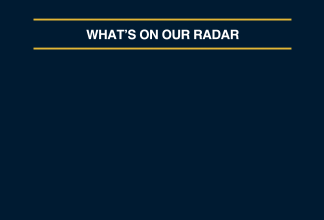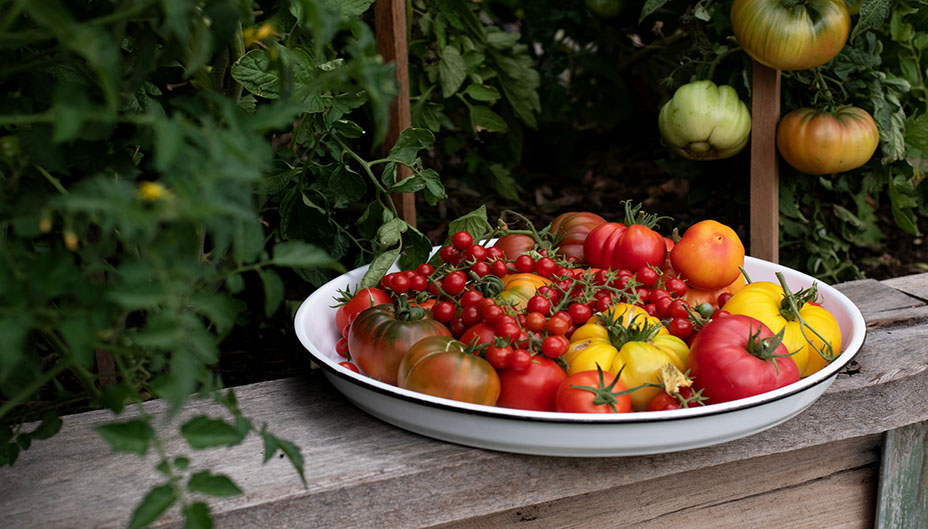Looking for Growth? 8 Investing Lessons Plucked from the Garden
Written by The Content Team
Published on August 10, 2020
minute read
Share:
As a gardener, is there anything more rewarding than that first juicy bite of a tomato you grew yourself? Or seeing the plants you tended to for many weeks finally bloom? Whether you're new to gardening or have been honing your green thumb for decades, a garden requires planning, scrutiny and, at times, tweaking.
Sound familiar?
Here, we present our top eight investing lessons cultivated in the garden – plus insights from investors working on growing their wealth.
1. Have a vision.
Are you planting saplings in hopes of enjoying lush shade decades from today? Or perhaps you're looking for more immediate returns in the form of a colourful display of annuals. In the garden, you can work toward long-term payoff, short-term payoff and just about everything in between. It's as true of horticulture as it is of investing: keeping your time horizon – and, ultimately, your goals – top of mind can help with decision making. Whether gardening or investing, a having a vision can help keep you headed in the right direction.
“Be confident in your decisions and understand why you're making them, why they're the right choice for you." - Alex1, investor
2. You do it your way, every step of the way.
Information abounds about how to build the perfect green scape, but your plot is completely within your control. You may decide to start small, with a planter here or there to test your veggie-growing abilities. Or, you may jump right in and decide to turn your entire yard into a wildflower wonderland. Like investing, your approach to gardening can be as simple or as complicated as you choose. Depending on what is (or isn't) working for you, you can always amend your approach as needed.
“I have only one client: me. And I'm pretty agreeable. I can choose to do my own thing and the timing is up to me." - Rita, investor
3. Find your risk-reward balance.
Hardy plants that have proven to thrive in your region can be a relatively safe choice – you tend to get what you expect. If you make a riskier move, like planting a brand new hybrid or taking a chance on a notoriously finicky flower, seeing success can be more rewarding – but there's also a bigger chance the end result may not be exactly as you hoped. How you react to risk is key to knowing what investments are right for you. All investments carry some risk; knowing what you're comfortable with, and how long you've got to weather any ups and downs, will help you decide what's right for you.
"I wouldn't do something that was keeping me up at night. If it was, I would know I would need to be doing something different." - Orion2, investor
4. Create a mix that's right for you.
Different types of plants have different things to offer, and, as with assets, it's worthwhile to consider your ideal mix. Like some fixed income may do for a portfolio, trees can serve as the backbone of the garden – typically they can grow slow and steady. Akin to dividend-paying blue-chip stocks, perennials hold some risk, but tend to give back each year. And, much like growth stocks that an investor may trade in and out of, annuals can bring about winning moments – or not. And don't forget, a lack of variety can leave your garden vulnerable to unexpected forces, be it a new type of mould or novel, hungry little critters. It’s a good idea to ensure that you research and determine what mix of investments is right for you and your situation.
"A lot of it now for me is about asset allocation. I'm looking for, and following, a plan." - Luke1, investor
5. You may need to tweak.
Whether big or small, your garden needs tending. You need to keep an eye on the performance of each individual plant, but it's important to take stock of the entire garden and assess what it may need, too. Has the ground cover overtaken the pathway? You may need to cut it back. Or perhaps the scene is too green and you may choose to add more annuals for colour. Whether rebalancing a portfolio or pruning a tree, you can scale back certain overgrown sections to divert resources to those that may need more attention.
“You've just got to have a big-picture perspective. It's not a sprint, it's a marathon." - Luke1, investor
6. Things are inherently cyclical.
Like financial markets, gardens have cycles, and some growing cycles are more fruitful than others. Importantly, both rain and shine have their roles. Much like market contractions, a tough growing period exposes, and can help the gardener weed out, the underperformers. Check out Just a Phase? What the Economic Cycle Means for Investors for more on business cycles.
“I don't feel panic anymore because when you have been through ups and downs enough times, you realize that, in hindsight, you did not have to freak out." - Linda1, investor
7. The fruits of your labour taste sweet.
There is something to be said for doing it yourself. That juicy vegetable or that bright bloom is more rewarding because you grew it on your own, and often comes cheaper than store-bought varieties. And the same can be said of building your portfolio. Managing your own investments puts you in control, and by doing it yourself, you may be saving on fees, which can potentially mean larger returns. Find out more in Know Yourself: 5 Qualities Direct Investors Share.
“I find investing a lot of fun." – Linda1, investor
8. There's always more to learn.
If you've never donned a pair of gardening gloves or wielded a shovel, it can be hard to know where to get started. And once you've started building your vegetable or flower garden, it can take work to figure out what to plant next. A practice account allows you to test out your ideas and strategies before putting down roots. (See what we did there?)
“I'm still learning and I'm gaining more confidence as I go." - Carrie2, investor
RBC Direct Investing Inc. and Royal Bank of Canada are separate corporate entities which are affiliated. RBC Direct Investing Inc. is a wholly owned subsidiary of Royal Bank of Canada and is a Member of the Investment Industry Regulatory Organization of Canada and the Canadian Investor Protection Fund. Royal Bank of Canada and certain of its issuers are related to RBC Direct Investing Inc. RBC Direct Investing Inc. does not provide investment advice or recommendations regarding the purchase or sale of any securities. Investors are responsible for their own investment decisions. RBC Direct Investing is a business name used by RBC Direct Investing Inc. ® / ™ Trademark(s) of Royal Bank of Canada. RBC and Royal Bank are registered trademarks of Royal Bank of Canada. Used under licence.
© Royal Bank of Canada 2020.
1These RBC Direct Investing clients have been compensated for sharing their stories.
2These RBC employees have shared their personal stories.
The views and opinions expressed in this publication are for your general interest and do not necessarily reflect the views and opinions of RBC Direct Investing. Furthermore, the products, services and securities referred to in this publication are only available in Canada and other jurisdictions where they may be legally offered for sale. If you are not currently resident of Canada, you should not access the information available on the RBC Direct Investing website.
Explore More

Here’s What Every Canadian Should Know About Estate Planning
Insights from Leanne Kaufman to help you feel more confident as you plan
minute read

3 Things We're Watching This Week
What the Inspired Investor team is watching
minute read

What’s Driving the Recent Surge in Gold Prices
Here are some things to watch with the gold market
minute read
Inspired Investor brings you personal stories, timely information and expert insights to empower your investment decisions. Visit About Us to find out more.







